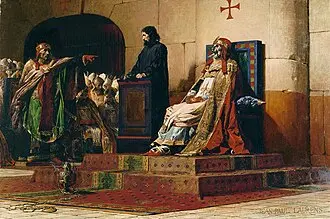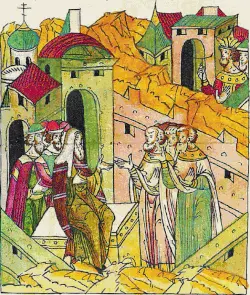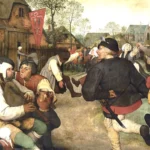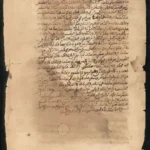
The Cadaver Synod: When a Pope Was Put on Trial… After Death
The Most Bizarre Trial in Papal History
In the annals of history, few events are as strange and macabre as the Cadaver Synod of 897 AD, when Pope Stephen VI put the corpse of his predecessor, Pope Formosus, on trial. This posthumous trial shocked contemporaries and has fascinated historians ever since as a grim symbol of medieval Church politics and power struggles.
The Political Turmoil of 9th-Century Rome
The late 9th century was a turbulent time for the papacy, riddled with factionalism and rivalries. Pope Formosus, who had served from 891 to 896, was a controversial figure. He was accused of perjury and illegally assuming the papacy, as well as political betrayals involving alliances with different factions and kings. When he died, his enemies seized the opportunity to settle old scores.
In January 897, Pope Stephen VI ordered Formosus’s corpse exhumed and dressed in papal vestments for trial before the clergy and citizens of Rome. The bizarre spectacle became known as the Cadaver Synod (or Synodus Horrenda)【Encyclopedia Britannica†1.

A Corpse on the Dock
During the trial, the corpse was propped up on a throne while a deacon was appointed to speak on behalf of the deceased pope. Charges against Formosus included violating canon law by accepting the papacy while still bishop of another diocese, as well as perjury and covenants made to rival political powers. Unsurprisingly, the corpse was found guilty.
The consequences were equally strange: Formosus’s papal acts were annulled, his corpse was stripped of its vestments, three fingers used for blessings were cut off, and his body was thrown into the Tiber River. Later accounts say his body was recovered and reburied, but the event left a stain on the papacy’s reputation.
Aftermath and Historical Significance
The Cadaver Synod deeply shocked medieval Europe and led to widespread outrage. Pope Stephen VI himself was imprisoned and later strangled, possibly by supporters of Formosus. The synod’s verdict was eventually annulled by subsequent popes, and Formosus was posthumously reinstated.
Historians view the Cadaver Synod as a reflection of the chaotic politics surrounding the papacy during the era known as the Saeculum Obscurum, or ”Dark Age” of the Church. It illustrates the lengths to which factions would go to discredit rivals and seize power, even to the extent of putting a dead man on trial.
A Grim Reminder of Power and Politics
The trial of a dead pope remains one of history’s most unsettling spectacles, symbolizing a time when religious authority was deeply entangled with brutal political gamesmanship. The Cadaver Synod continues to fascinate and horrify as a macabre tale of justice — or injustice — that defies reason and underscores the human thirst for power beyond the grave.






